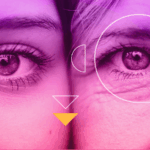By Jill Gray, EVP of Global Client Solutions at VidMob
From a global pandemic to a racial justice revolution, these past 18 months have accelerated cultural change and demanded that advertising keep up in order to stay relevant. Creative themes of togetherness and diversity & inclusion drove meaningful campaign performance shifts.
A simple creative decision to feature an indoor shot or an outdoor shot made a substantial difference in how an ad performed, with indoor scenes decreasing performance by 57% when comparing pre/early-covid in January 2020 to lockdown in April 2020, while outdoor scenes drove a 60% increase in purchase rate. Campaign norms became liabilities during different stages of the pandemic. Happy emotions struggled to resonate, with a 64% decrease in purchase rate while calm videos jumped in performance by 156%. The world changed fast, and advertisers who didn’t have the tools or the agility to act found themselves with underperforming creative.
It isn’t just a massive global event that changes how customers resonate with messaging. With a camera and a stage to be seen around the world in the palm of billions of hands, creator-led advertising is greatly accelerating cultural change. A catchy soundtrack captures the world’s attention until people have heard it everywhere. Sunny skies stop thumbs until people set their sights on cozy winter days.
The speed of culture waits for no creative team. The beauty of creativity is that it cannot be contained by a formula; as soon as a brand figures out what works, it no longer stands out as well. Headlines change, trends emerge, and people are moving on to the next thing that engages them. The effect that creative decisions have on audience behavior is both tremendous and ever-changing.
Impactful Creative Leverages Science to Drive Art
Creative teams typically rely on a series of relatively static insights and creative intuition that rarely connect to performance; from persona information to past campaign performance and brand requirements to qualitative research. Media performance reports may indicate which ad in its entirety worked better, but teams are left to guess why. What elements of a piece of creative drove or hurt performance?
Computer vision can help. By being able to break down the anatomy of an ad to all of its strategic and tactical elements, and connect those elements to performance, marketers can finally have the set of tools that allows them to better pull the most important lever of their success: creativity. Finally, marketers can access intelligence about creative performance that informs creative decision-making; science unlocks art.
In practical terms, the artificial intelligence that underpins computer vision helps brands move from bluntly comparing “creative A” vs. “creative B”, to unveiling how thousands of creative elements within their ads have impacted performance over a period of time. From color to pacing, emotions to messaging, human presence to eye gaze, every single element of an ad can be broken down in seconds, in a way that only technology can do, revealing powerful insights about how a brand’s creative strategy can best deliver the performance they are looking for.
For example, a coffee brand used computer vision to find exactly the right mix of coffee and milk that drove the highest performance. And a footwear ecomm brand saw that creatives that featured unboxing outperformed product demo imagery for men but that the opposite was true for women. Technology revealed insights that set each of these brands off on the right foot (pun intended!).
Insights have an Expiration Date
Just having the creative intelligence isn’t enough; brands also need to be able to act on it and nimbly adjust to their customers. In the first few months of the pandemic, there were massive changes in creative drivers of performance. And that same level of change happens constantly, for every brand and every audience. One beauty brand with two dominant brand colors saw over the course of 6 months how the use of brand color A went from driving performance to detracting from performance, to driving performance once again. Creative insights and creative performance have their own decay curves. Colors, featured actors, songs, taglines and thousands of other campaign elements can perform extremely well only to start underperforming compared to a different design.
Strong teams are set up with both the data and the agility to respond to it. While creators have opinions, data doesn’t play favorites. A creative that performs well for weeks often loses steam as people become saturated by it, or start to tune it out because it no longer stands out from the crowd. With creative insights, these cycles are clear and changes can be made with confidence.
As Q4 approaches, a time that makes or breaks the year for so many, the marketers that have both the technological tools and the agility to act on ever-changing creative insights will win. Creativity does not exist in a vacuum and should not be decided in board rooms. Culture, context, and public opinion will continue to shift in the blink of an eye, and with that so too will advertising performance.






